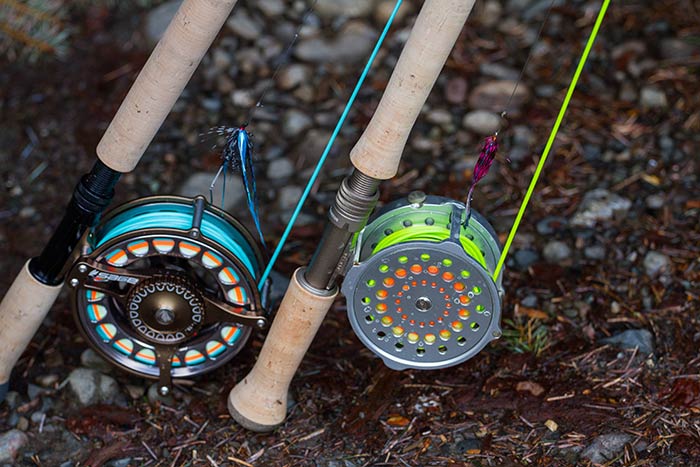Earlier this year we were given the opportunity to test Sage’s new Method fly rod and Evoke reel. Since the time of the test coincided with prime steelhead season we requested a 7116-4 Spey Rod. This 12’ 6” 7-Weight Spey is a great general purpose Spey rod. For a reel we were sent a Evoke 10, large enough to handle line weights 9-10, or Spey lines.
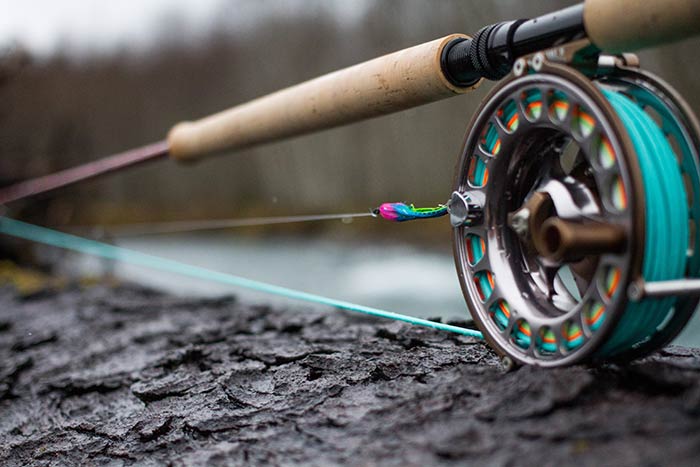
The Rod
One of the most strikingly noticeable things about this rod is its color. The bright Magma Red blank really stands out and draws your eye. Pulling the rod out of its tube for the first time, it was readily apparent that the fit and finish is really good on these rods. The high quality cork is smooth and well shaped to fit the hand. The wraps, the guides, the lettering.. Everything is done with care. Which is about what you might expect from a $975 fly rod.
Like all of Sage’s higher end rods, the Method series is made at their facility in Bainbridge Island, WA. They are available in a single hand version in 4-11 weight, a switch rod in 6-9 weight, and a true spey in 6-10 weight. One things that Sage does that I really like on their switch rods is build them a little longer than most other manufacturers at 11’ 9”.
Sage categorizes the Method as “Ultra-Fast”, and indeed it is. Throughout the line up, this rod is stiff. Really stiff. Being an ultra fast rod does have its advantages, namely distance and line speed. But you better bring your A game when you cast this thing. If your timing or form is off at all, you will know it. It is not forgiving at all. The Method is a caster’s rod.
The Method includes a powder coated aluminum rod tube and a nice rod sock to keep it safe while traveling or during storage.
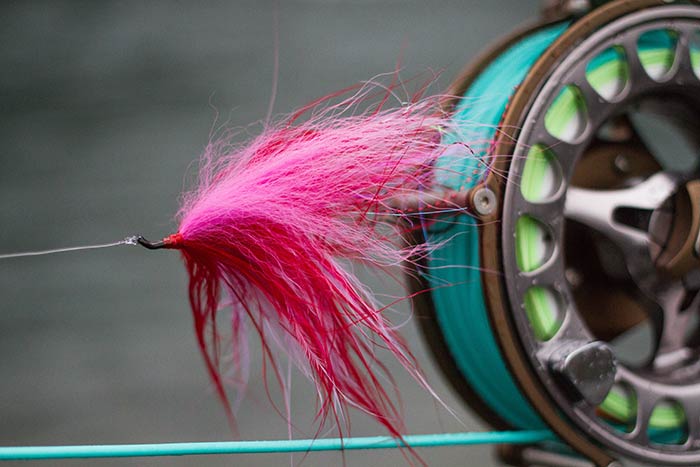
The Reel
The Evoke has drawn some strong opinions since its release, both positive and negative. It is certainly one of the more futuristic looking reels on the market today. The shift from tradition has brought some flak to the design. Honestly, when I first saw the reel I was not impressed. I’ve always been more of a classic reel kind of guy for Spey rods. But the more I played around with it the more I liked it.
One of the big new features of the Evoke is the modified frame that allows you easy access to palm the reel when fighting big fish. Palming the reel has long been a trusted technique to slow down hard running fish, but other modern fly reels lack an easy way to do this. The Evoke was designed to make it easy to add varying degrees of pressure with your fingers, palm, whatever. With this design you can easily add pressure from either side of the reel, which is a nice touch.
It does have the same carbon drag design as Sage’s 6000 reel series in case you were wondering if palming was your only option to slow fish down. The drag knob is numbered from 1 to 39 and allows for some precise fine tuning. The large arbor design is great for quick line pickup, and the fully machined frame and spool as well as the sealed drag are all saltwater safe. One thing to keep in mind with this reel though is that the direction of retrieve is non reversible.
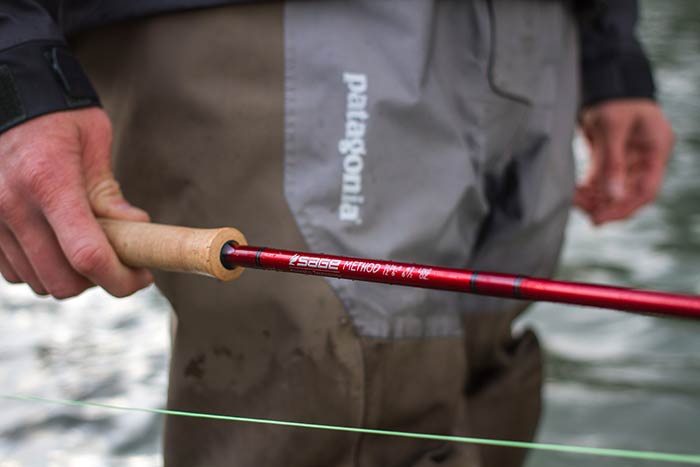
Fishing
A disclaimer before I go on. I am not a very good Spey caster. I can do it, I’m just not very good at it. So during the tests I put this rod through, I had two much better casters play around and fish with this set up to get a well rounded opinion.
My first outing with this rod was a rainy February weekend on the Olympic Peninsula. The two rivers I was planning to fish, the Hoh and the Queets, are both pretty big water and are known for large fish. The flows were good, and there were fish in the river. I had high hopes.
Another disclaimer. I am not a steelhead fisherman. I’m a trout guy. So going out alone with a Spey rod and some swing flies to try to catch a chrome ghost using one of the hardest ways to catch them was probably not a good idea. But I got some really good info from the guys at work, and felt pretty prepared.
Like I said, I am not a great Spey caster. On that first day it took me a while to get things kind of dialed in, but once I got in the swing of things (ha, get it?), I was very impressed. The rod handled very well. I was able to get more distance with less effort than I ever had before.
The setup consisted of a RIO Skagit Max 550 grain head with a Medium iMow tip (5’ Intermediate / 5’ T-11). Doing some research and asking advice, this seemed to be the way to go. I would have liked to have tested the rod with a couple other grain weights, but it performed very well for me.
During the course of the next two days, a couple things really stood out. First off was how sensitive the Method is during the swing. You can feel your fly ticking bottom, changing speeds in different currents, and every little bump, halt, tick or anything that happens to your line or fly. The one fish I actually landed on this rod was a small-ish bull trout on the Queets. I was able to feel the fish grab it, and every head shake and movement. It was really impressive.
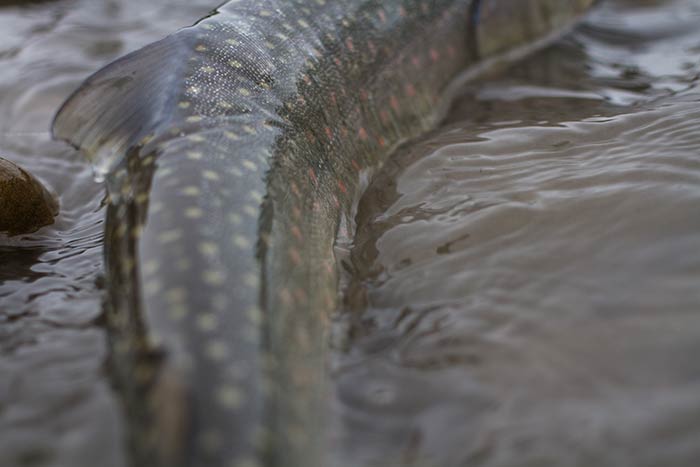
Next, the Method is a very well balanced rod. And light. Swinging flies for steelhead involves a lot of casting, all day long. I didn’t tire out as quickly as I have with other rods. The high quality cork of the grip didn’t get slick in the rain, and was comfortable to hold and fish with all day.
On another trip, I handed the rod to two friends and asked them to fish with it and tell me what they thought. After the first cast, they both had the same exact reaction: they turned to me and said “Wow”. One comment we had all heard repeatedly since the release of the Method was “It’s just a TCX in red. Super fast with no feel”. Both of these guys had fished a TCX and were really surprised as how lively the Method is.
After letting them both play around with it and fish with it for some time, they agreed. It’s a good rod. Like I mentioned, both of them were blown away by the feel and sensitivity of it. They’re both die-hard Winston guys, but they were singing the praises of the Method. It was really impressive to watch these guys put that rod through it’s paces. They were able to make that rod perform in a way that someone at my skill level can’t.

Sadly, the only fish caught during our testing period was that one bull trout, so I didn’t really get to put the Evoke to the test. I will say this though.. I liked fishing with it. Its large and somewhat heavy design perfectly complimented the rod and balanced it very well. With its large arbor design line retrieve was quick and I didn’t have any problems with my running line fouling in it. I’m sure it would have handled any big fish with ease.
The Method/Evoke is a good set up. But what did I not like about it?
It’s a very fast rod. If you aren’t at the top of your game, you’re going to have a frustrating day. Don’t buy this rod unless you can handle it. While it does have a lot of feel, it isn’t the most “soulful” rod out there. A lot of guys (particularly those doing it in the Rockies) throw Spey rods because they enjoy casting. Casting a rod with a lot of soul and feel adds so much to the experience. The Method is a huge step up from the TCX, but it’s still puts being a fast action rod ahead of feel.
As I mentioned, this is not a forgiving rod. At all. More than once, as the days wore on and the number of casts piled up, I found myself untangling knots, flubbing casts, and turning the air blue around me with various curses. Admittedly all operator error, but it would be nice to have a little more forgiveness in the rod.
The reel was functionally great, but aesthetically… Not so much. And this is just purely a personal opinion, but on a Spey rod I like classic reels. I also wonder about durability if you trip and fall and somehow manage to hit the palming section of the reel against a rock or whatever. If would seem you might be able to knock that out of place. The Evoke is damn burly, and that would require a pretty accurate hit, so I doubt it would ever happen. But still, when you’re standing in the rain for eight hours swinging a fly for a fish that you begin to believe is about as real as Bigfoot, you tend to think about these things.
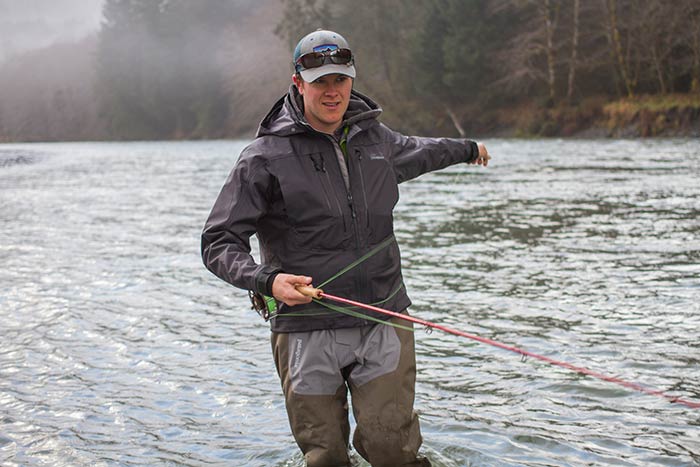
Conclusions
Would I personally buy this rod? Honestly, no. I am not a proficient enough Spey caster to really get the most out of it. As I get better, would I consider buying one of these? Absolutely. After watching what a good caster can do with it, I am sold.
Remember, this is not a beginner’s rod. This is not a intermediate skill level rod. The Method is built for those who can cast well. This is almost a thousand dollar rod, so consider it carefully and test it out before buying.
Sage has done a great job with the Method series. Working in a fly shop, I get a chance to talk to a lot of people about rods. When asked about the Method a fair number of them say “I don’t like it”. Ask them why, and it turns out they have never even cast it. If you get a chance, go cast of these rods and give it a shot. Whether a 4-weight trout rod or this 7126 Spey, I think you’ll be surprised.
The Evoke worked really well as a Spey reel, and I’m sure will be equally at home on the saltwater flats chasing bonefish, tarpon and permit (or any other hard fighting fish). Once you get used to the way it looks, the way it performs will make an impression.
If you’re in the market I would certainly suggest heading down to your local fly shop and trying one of these out.
